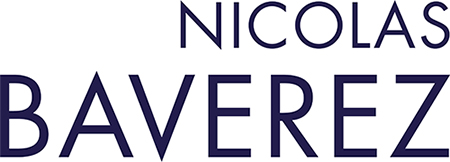The radical nature of the Biden plan might present a severe risk for the American economy.
Donald Trump’s acquittal after his second impeachment marks the real beginning of Joe Biden’s presidency. After overturning the most controversial decisions of his predecessor, Biden now has to implement his program of reconciliation both within the USA and with the world. The core of the program is a massive $1,900 billion recovery plan, whose success or failure will determine the fate of his administration.
The Biden plan – added to the $900 billion mobilized by Donald Trump last December – brings budget support for US activity to 14% of GDP, i.e. to an unprecedented peacetime level. It consists of three major groups of measures: to combat the epidemic and for healthcare; to finance the states and local government; and, above all, to help households in the form of a $1,400 check for every American and a raise in the minimum hourly wage to $15.
There are two objectives. From an economic standpoint, recovery aims to bring back full employment, at a time when the unemployment level – which had reached 3.5% of the working population at the end of 2019 – is officially estimated at 6.3%, although it could be closer to 10% according to Jay Powell, the President of the Fed. Biden’s conviction is that there is a need for fast, strong action in order to avoid the mistakes made by Japan – locked into stagflation since the early 1990s – and by Barack Obama, whose $800 billion plan in 2009 turned out to be insufficient. From a political standpoint, the plan aims to give hope back to Americans, to bring stability to the middle classes by providing a concrete solution to the difficulties experienced by American households – 40% of whom can hardly make ends meet – and thereby to counteract the atomization and polarization of society and of the nation that Donald Trump’s success was founded on.
However, the Biden plan has provoked lively criticism, even within the Democrat party and made public by Larry Summers, formerly Barack Obama’s Treasury Secretary. In fact, its radical nature might present a severe risk for the American economy.
The first problem arises from the extent of budgetary support, which amounts to between 3 and 5 times the fall in production caused by the Covid-19 epidemic, and which adds to the $3,000 billion or so that the Fed injected into the economic circuit. This can only lead to activity becoming overheated, particularly when sanitary restrictions are lifted. This will be worsened by the second problem, which is that priority is given to the distribution of purchasing power and households’ consumption and not to the investment that is vital in order to rebuild the production system: education, infrastructures and ecological transition. Thereby, the funds and the political capital invested in the recovery plan sacrifice fundamental reforms in favor of vote-catching. Thirdly, the effectiveness of direct financial aid for households is dubious, since only 30% of the first $1,200 checks paid by the Trump administration were spent on consumer goods. The rest was saved, used to pay off debts or used for speculation, as the GameStop affair has illustrated. Therefore, the recovery plan could reinforce inequality and bubbles, as can be seen in real estate values – up by 10% – or in the financial markets, which are at record levels.
Finally, inflation could raise its head again. Price rises may well be limited to 1.4% and resistance to globalization and the digital revolution create deflationary pressures, but, in 2020, money supply increased by 75% in the developed world whilst production decreased by more than 5%, and prices are soaring for raw material prices, energy – notably oil – and agricultural produce (a 25% rise in cereal prices and a 90% rise in vegetable oil prices in six months). The reopening of economies could cause a boom and trigger an inflationary spiral, which would oblige central banks to raise their interest rates at the cost of a bond crash and a chain reaction of defaults for countries and over-indebted companies. The radical nature of the recovery would then cause a violent recession.
These criticisms are even more deserving of attention in that the recovery of the USA would destabilize all democracies both economically and politically.
(Column published in Le Figaro on 22nd February 2021)
